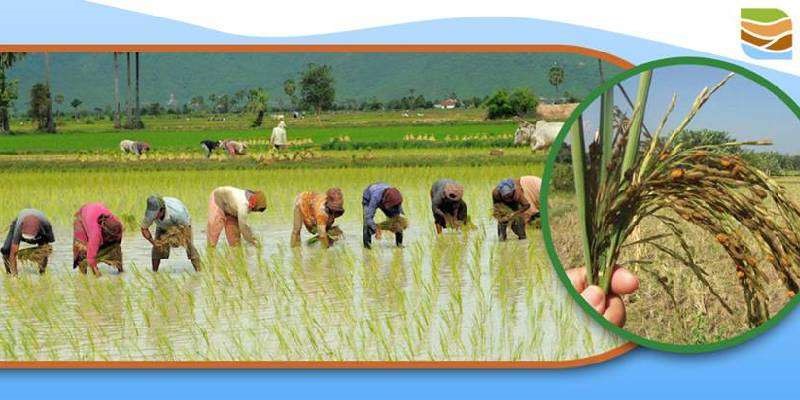Description

Disclaimer: Copyright infringement not intended.
Context
- The Punjab Agricultural University (PAU), Ludhiana, has developed a biocontrol agent named Trichoderma asperellum (2% WP) to combat the deadly 'foot rot' or 'bakanae' disease that affects Basmati rice crops.
Foot Rot
Nature of Foot Rot:
- Foot rot, also known as bakanae, is a fungal disease primarily affecting Basmati rice crops during the seedling stage. The causative agent is Fusarium verticillioides, which is a soil-seed borne pathogen.
Symptoms and Spread:
- Infected seedlings exhibit distinct symptoms, starting with a pale yellowing of leaves, followed by elongation, drying up, and eventual death.
- The infection spreads through root invasion, leading to colonization of the stem base, which severely compromises the plant's health and productivity.
Current Management Practices:
- Farmers currently employ several strategies to manage foot rot, including early seedling treatment with Trichoderma harzianum, a commonly used biocontrol agent.
- Additionally, seeds are treated with fungicides like Sprint 75 WS (carbendazim + mancozeb) to prevent fungal infections.
- There's a significant emphasis on using disease-free seeds and promptly destroying any infected seedlings to prevent further spread.
- Timely nursery management is crucial, with experts recommending seed sowing in the first fortnight of June and transplantation in July to avoid the disease's peak during high-temperature months like May.

PAU's Solution: Trichoderma asperellum
Introduction of Biocontrol Agent:
- PAU's development of Trichoderma asperellum represents a significant advancement in combating foot rot. This biocontrol agent has been registered with the Central Insecticides Board and Registration Committee (CIBRC), ensuring its efficacy and safety.
- Trichoderma asperellum is ecofriendly, underscoring its role in providing a non-chemical alternative to traditional pesticides while minimizing environmental harm.
Features and Benefits:
- Trichoderma asperellum, offers several advantages over conventional treatments.
- Its efficacy in combating foot rot without leaving harmful residues on the crop ensures both crop health and consumer safety.
- The biocontrol agent shows promising results in experimental phases, indicating its potential to significantly reduce foot rot incidence and mitigate yield losses.
Implementation and Distribution:
- PAU advocates for the comprehensive adoption of Trichoderma asperellum in Basmati rice cultivation, advising farmers to treat both seeds and seedlings with this biocontrol agent.
- To facilitate widespread adoption, PAU has signed an MOU with a private company for large-scale manufacturing and distribution of Trichoderma asperellum.
- The aim is to make this innovative solution readily available to farmers in Punjab and beyond, starting from the upcoming growing season.
Implications and Future Prospects
Economic Impact:
- Foot rot poses a significant threat to Basmati rice yields, thereby jeopardizing Punjab's export prospects.
- The introduction of Trichoderma asperellum offers a ray of hope, potentially safeguarding the quality and quantity of Basmati rice exports from the region.
Environmental Considerations:
- By reducing reliance on chemical treatments like carbendazim, which is already banned in Punjab due to its harmful residues, Trichoderma asperellum promotes soil health and environmental sustainability.
- Its eco-friendly nature aligns with modern agricultural practices focused on minimizing environmental impact while ensuring food security.
Market Influence:
- PAU's innovation holds strategic importance for Punjab and Haryana, the two major contributors to India's basmati exports.
- The widespread adoption of Trichoderma asperellum could enhance the competitiveness and sustainability of basmati rice cultivation, thereby bolstering the agricultural economy of the region.
|
PRACTICE QUESTION
Q: Which of the following statements best describes the foot rot disease?
A) It is a bacterial infection affecting the roots of cereal crops.
B) It primarily affects the leaves of fruit-bearing trees, leading to premature defoliation.
C) It is a fungal disease that commonly affects Basmati rice crops during the seedling stage.
D) It is caused by a viral pathogen that spreads through airborne transmission.
Answer:
C) It is a fungal disease that commonly affects Basmati rice crops during the seedling stage.
|
SOURCE: THE INDIAN EXPRESS












